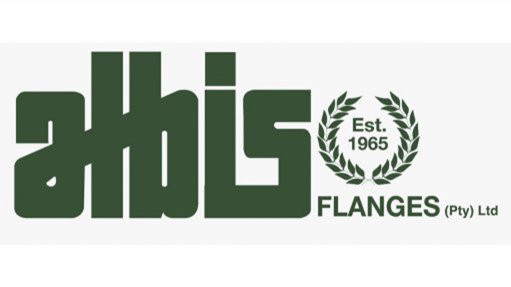Zambia seeks investors for mini hydro projects
Zambia’s energy sector offers ample opportunities for investors, Rural Electrification Authority (REA-Zambia) community mobilisation officer Naomi Sidomo said late last month, highlighting the particular potential for pubic–private partnerships in developing mini hydropower plants.
With about 40% of Southern Africa’s water resources located in Zambia, the country has the potential to generate 6 000 MW of energy from hydropower, but currently only has installed the capacity of about 1 700 MW.
Speaking at a business symposium hosted by auditing firm KPMG, in Johannesburg, Sidomo said REA-Zambia had, through feasibility studies, identified 29 potential mini hydro project sites.
Currently, only 3.1% of Zambia’s rural population has access to electricity, with government, through the REA-Zambia, aiming to increase this rate to 51% by 2030, as set out in its Rural Electrification Master Plan (REMP).
According to the REMP, $11-billion is needed to achieve this target.
“Implementation of mini hydropower projects and other renewables is crucial,” Sidomo told potential investors in Johannesburg.
Private power producer Copperbelt Energy Corporation strategy and regulation director Silvester Hibajene added that electricity demand in Africa’s largest copper-producing country was rising rapidly, owing to economic growth averaging 6.5% a year over the past five years.
“Over the next five years, Zambia needs to double its power generation capacity. It is estimated that new capacity of 1 870 MW is needed, which would cost $4-billion,” he indicated.
Other technologies promoted for the REMP included home solar systems, grid extension and biomass gasification.
In terms of solar energy, Sidomo noted that the REA-Zambia had, together with the World Bank, implemented various pilot projects, which it sought to repli- cate through public–private partnernships (PPPs).
To encourage PPPs in the country’s energy sector, REA-Zambia offered up to 100% capital support to private companies developing energy generation capacity in Zambia, while the Energy Regulatory Board was working towards cost-reflective tariffs to attract investment.
KPMG Zambia senior partner Jason Kazilimani stated that the country offered a strong investment case, citing its solid economic growth and political stability.
Quoting the International Monetary Fund’s forecast that Zambia’s gross domestic product would reach $23.1-billion in 2013, he said that the country would be among the top-ten fastest growing economies globally from 2011 to 2015.
Most of Zambia’s electricity is generated at the Kariba dam hydropower plant in the Zambezi river. However, Kazilimani pointed out that great opportunity existed for generation projects in the north-west of the country, where most of the mining operations were located.
He further noted that Zambia had a power generation deficit, with State utility Zambia Electricity Supply Corporation’s (Zesco’s) generation capacity at 1.6 GW and demand at 1.85 GW. This resulted in many Zambian towns running off-grid and making use of diesel generators to feed their power requirements.
Kazilimani noted that the $420-million Kariba North Bank Extension, which would add 360 MW to the grid when it became operational this year, would be sufficient to cater for the needs of Zesco’s current customers, but that the utility would again fall into a deficit when its off-grid customers came online.
To further promote foreign direct investment, new legislation allowed electricity companies to sell and invoice power to Zesco in US dollars, which reduced financing risks.
Article Enquiry
Email Article
Save Article
Feedback
To advertise email advertising@creamermedia.co.za or click here
Comments
Press Office
Announcements
What's On
Subscribe to improve your user experience...
Option 1 (equivalent of R125 a month):
Receive a weekly copy of Creamer Media's Engineering News & Mining Weekly magazine
(print copy for those in South Africa and e-magazine for those outside of South Africa)
Receive daily email newsletters
Access to full search results
Access archive of magazine back copies
Access to Projects in Progress
Access to ONE Research Report of your choice in PDF format
Option 2 (equivalent of R375 a month):
All benefits from Option 1
PLUS
Access to Creamer Media's Research Channel Africa for ALL Research Reports, in PDF format, on various industrial and mining sectors
including Electricity; Water; Energy Transition; Hydrogen; Roads, Rail and Ports; Coal; Gold; Platinum; Battery Metals; etc.
Already a subscriber?
Forgotten your password?
Receive weekly copy of Creamer Media's Engineering News & Mining Weekly magazine (print copy for those in South Africa and e-magazine for those outside of South Africa)
➕
Recieve daily email newsletters
➕
Access to full search results
➕
Access archive of magazine back copies
➕
Access to Projects in Progress
➕
Access to ONE Research Report of your choice in PDF format
RESEARCH CHANNEL AFRICA
R4500 (equivalent of R375 a month)
SUBSCRIBEAll benefits from Option 1
➕
Access to Creamer Media's Research Channel Africa for ALL Research Reports on various industrial and mining sectors, in PDF format, including on:
Electricity
➕
Water
➕
Energy Transition
➕
Hydrogen
➕
Roads, Rail and Ports
➕
Coal
➕
Gold
➕
Platinum
➕
Battery Metals
➕
etc.
Receive all benefits from Option 1 or Option 2 delivered to numerous people at your company
➕
Multiple User names and Passwords for simultaneous log-ins
➕
Intranet integration access to all in your organisation
















